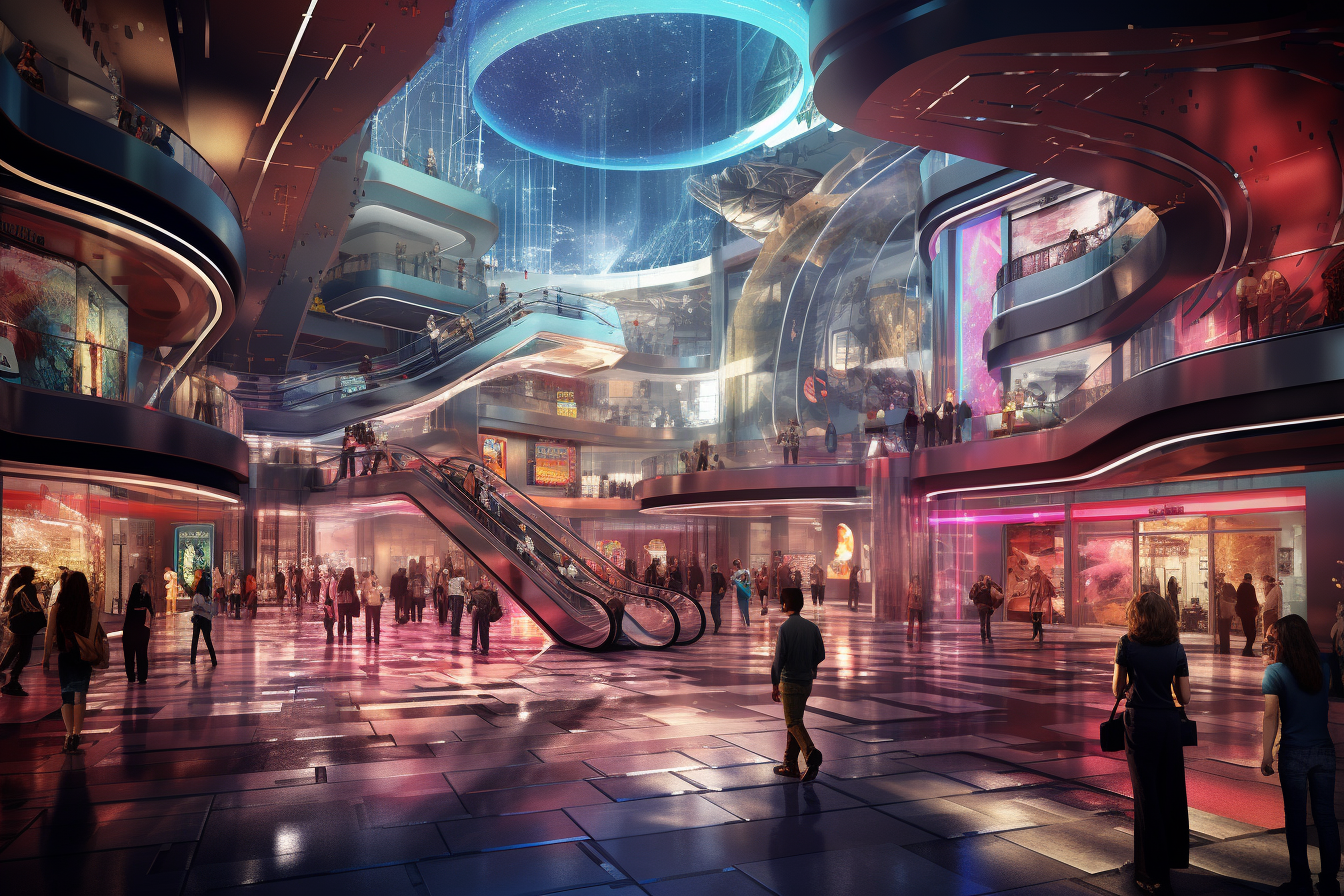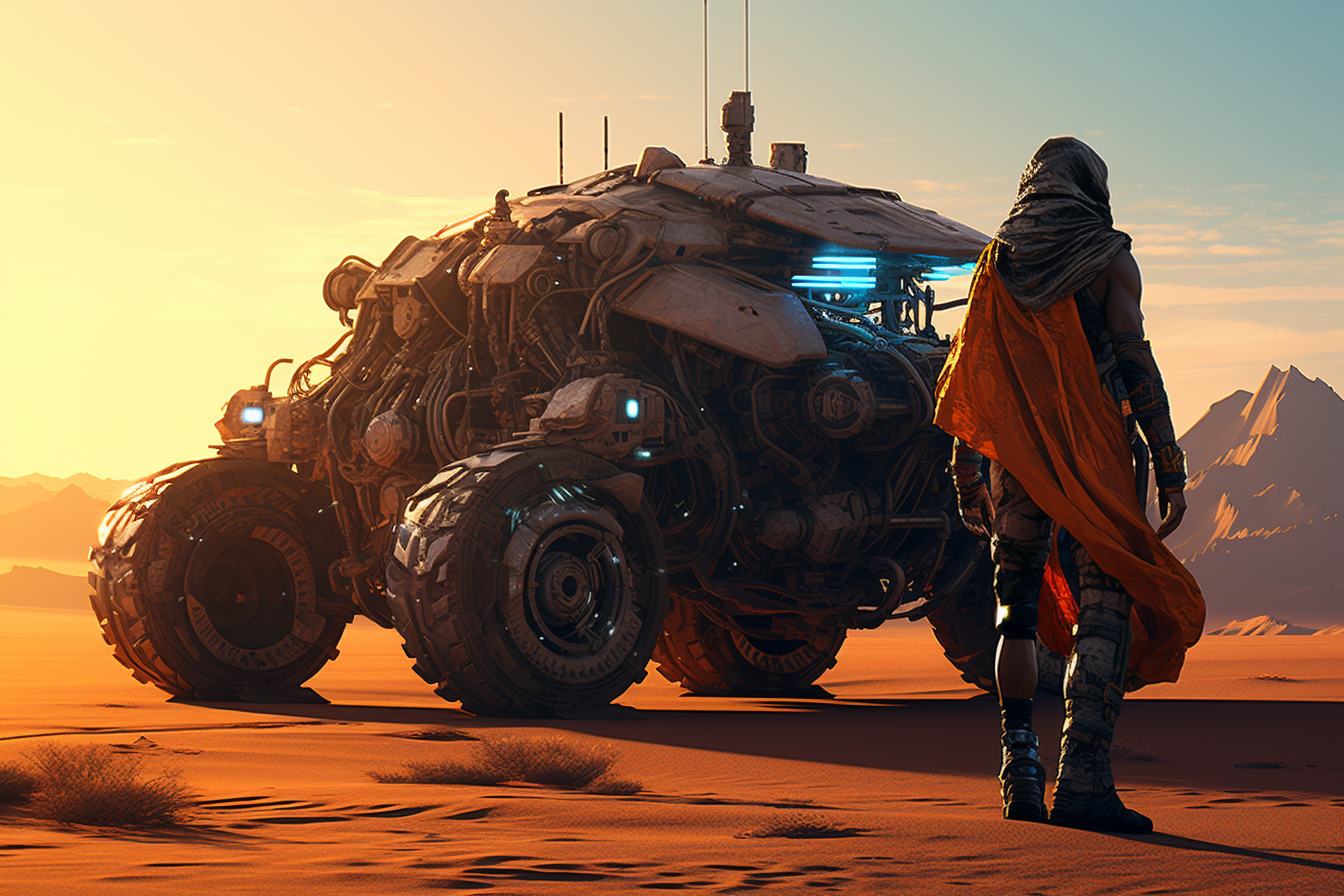Gibsonian Cyberpunk and the Equitable Future
"The future is already here. It's just not quite evenly distributed yet" is a famous phrase by the American writer William Gibson that has been taken up by doctors, scientists and communicators. A simple, immediate, visionary and in some ways disturbing sentence.

"The future is already here. It's just not quite evenly distributed yet" is a famous phrase by the American writer William Gibson that has been taken up by doctors, scientists and communicators. A simple, immediate, visionary and in some ways disturbing sentence. Because when we look at his books, his diffuse society, his cyberpunk Sprawl, we seem to find interesting connections with what we are experiencing in these years, and for some, like yours truly, a vague sense of disquiet arises and moves questions that we may not be used to asking anymore, but that can give us a key to interpret even more than answers. Isn't interpretation more than answering the gear of Gibson's novels?
Gibson Sprawl refers to a fictional, sprawling, dystopian urban setting prominently featured in the works of renowned science fiction author William Gibson. This term is closely associated with Gibson's cyberpunk genre, particularly his influential novel "Neuromancer," published in 1984. The Gibson Sprawl is characterized by its depiction of a chaotic, high-tech, and gritty urban landscape where advanced technology, corporate power, and cybernetic enhancements intersect with a decaying, noir-infused atmosphere.

Augmented reality is here?
How far are we from the grafted individuals of Gibson's world? Or from the transplanted ones of our Michael B. Morgan? If we think about our daily life: How many questions arise? Let us start with examples, indeed with fragments of real consistency of disquiet: How much do we manage to do without, to forget our cell phones? Our headphones, perhaps wireless, that allow us to listen to music: How much do we use them? How many of us would like to try Facebook or Google's augmented reality glasses? If we were in Boston, Cleveland, Paris or Rome: How many of us would know our way around without a device? And again, do we wear our smartwatch that monitors our blood pressure, heart rate, number of steps, amount of urine (not that one yet), even at night? Do we need to count our steps, laps, miles, friends (social, strictly social), how many people follow us, how many people we follow, average number of nightly awakenings, how many times...who...when...?
Augmented reality glasses to experience the metaverse
Google has been involved in AR glasses development through its Google Glass project. Google Glass, initially introduced as a consumer product in 2013, featured a small, transparent display that provided users with information in their field of view. Users could interact with it through voice commands, touch gestures, and a touchpad on the side of the glasses. However, Google Glass faced privacy concerns, limited adoption, and social acceptance issues, leading Google to discontinue the consumer version in 2015.
Afterward, Google shifted its focus to enterprise and industrial applications. In 2017, Google launched "Google Glass Enterprise Edition," which is tailored for use in business and professional environments. These glasses are designed to assist workers with tasks like remote assistance, training, and documentation.
Facebook (Meta Platforms, Inc.): Facebook, now known as Meta Platforms, Inc., is developing AR glasses as part of its long-term vision for the metaverse, a shared, immersive digital space. In October 2021, Meta unveiled "Project Aria," a research project aimed at developing AR glasses. While Project Aria isn't a consumer product yet, it represents Meta's ambitions in the AR space.
These glasses would be intended to overlay digital information onto the real world, offering a blend of the physical and digital realms. The development of Project Aria is part of Meta's broader efforts to create a metaverse, where users can interact and socialize in immersive virtual spaces.

Hyperconnectivity is also a mindset
Here is a vision: Since the 2000s (to be optimistic), technology has invaded our lives in increasingly behavioral and cognitive ways; it has taken over our data. Our intimacy has begun to become public and less private. It started the path of hyperconnectivity that brings us to today, where if we do not have at least 100 megabytes of bandwidth at home, we are unhappily forgotten by society, nomads of the countryside amidst the dust and grease of engines that are no longer environmentally friendly. So we try to rely on trustworthy salesmen and technicians. We take the vehicles or our electric car that disturbs less CO2 detectors, now strategically placed for all cities. We go to the nearest shopping mall, domain of the CORPs, which between subliminal messages and advertisements comfortably lead us to our next purchase. And here is who sells us our new fashionable cell phone, a budding "ripperdoc". A potential tech-surgeon of the future. Well, I hope no one ever puts a scalpel on my head, God forbid.
Permanent Nomads, but Battery-Backed
We have begun to see the world through a screen, to know places by digital hearsay, to stop worrying about the journey with all its contingencies and look straight at the destination. We trust that our trusty smartphone will never leave us anyway, with all the spare batteries we carry around, or the ability to "connect" to the power grid in bars and clubs via the convenient USB "connector". Yes, because connectivity has become a review requirement. How many stars will the protagonists of the web review cult lose if a bed&breakfast does not have a good quality network connection? No matter the location, the scenery, the courtesy, if it does not have a connection, we have gone back ten years, past the suburbs, into the ranks of nomads so much more like Native Americans than we can imagine.

A terrible marriage: native and digital
And by the way, but really "digital natives"? Did we really have the courage to introduce this terrible juxtaposition into our language? As if it could be equated with a sense of belonging? Doesn't the juxtaposition of these two words make your liver turn? "Native" and "digital", blood and technology, blood and machine, is already a strong hint that we are already grafted in potential. Of course, because when the new fad, the new hype actor associated with some corporation comes along and tells us how great his graft, his subcutaneous chip, is, what are we going to do? Are we going to follow the fad? Are we going to take another step into that increasingly hopeless happy ending world that cyberpunk has shown us?
Are they just novels?
The cyberpunk ones are just novels. Here, apparently today, with almost scientific precision, we can take up Gibson's phrase: Cyberpunk has turned out to be close to an Orwellian vision and not a "Sword Coast" or a "Shannara" in technological sauce. The future is already here, and it is far more distributed than we expected. Though never equitable.
Gibson's cyberpunk to read
Sprawl trilogy:
1. Neuromancer (1984)
2. Count Zero (1986)
3. Mona Lisa Overdrive (1988)
The Difference Engine (1990; with Bruce Sterling)
Bridge trilogy:
1. Virtual Light (1993)
2. Idoru (1996)
3. All Tomorrow's Parties (1999)
Short fiction
"Burning Chrome" (1986, preface by Bruce Sterling):
"Johnny Mnemonic" (May 1981, Omni)
"The Gernsback Continuum" (1981, Universe 11)
"Fragments of a Hologram Rose" (Summer 1977, UnEarth 3)
"The Belonging Kind", with John Shirley (1981, Shadows 4)
"Hinterlands" (October 1981, Omni)
"Red Star, Winter Orbit", with Bruce Sterling (July 1983, Omni)
"New Rose Hotel" (July 1984, Omni)
"The Winter Market" (November 1985, Vancouver)
"Dogfight", with Michael Swanwick (July 1985, Omni)
"Burning Chrome" (July 1982, Omni)